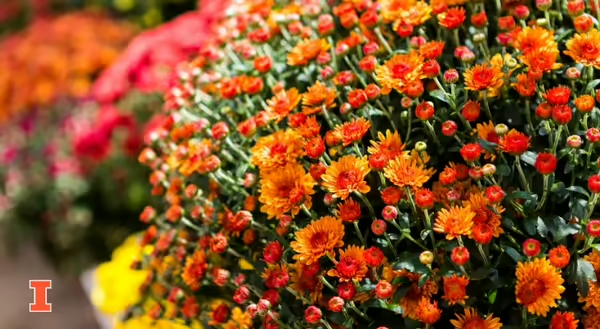
Certain things just say “fall” to me—changing leaves, apple cider, pumpkins, and of course, mums! This is the time of year every garden store is filled to the brim with mums in every color and size. With the right care, those blooms will last and maybe even come back next year!
Choosing the right mum
There are many things to consider when choosing your mum. The first thing to consider is what size would fit your space? If you have a larger, more open space, pick a larger size so that it doesn’t get lost. But don’t be afraid to pack them in. Having several mounds in a container will look great and help insulate the soil, prolonging their life. Secondly, consider the flower shape and color. According to the National Chrysanthemum Society, there are 13 different classes of blooms. Some of these are easier to find than others. This relates back to our first consideration, however, as some bloom types (i.e. Decoratives) will grow taller, while others (i.e. Cushions, Pompoms, and Buttons) will be shorter. Color is also a personal preference. Mixing and matching is encouraged! Finally, if you need color now, look for a plant that is already in full bloom. If you can wait, however, one with more buds will likely last longer.
Caring for your mum
Potted mums like their water. Plan to water them every other day, or at least when the top inch of soil is dry. Bright, indirect sunlight is best. Mums are short-day plants, meaning that shorter days cue them to flower. If your mums are by artificial outdoor lights and are not flowering, this could be why. As the days get cooler, make plans to protect your mums if there is frost in the forecast. Pull them closer to the house, inside a shed or garage, or just plan to lightly cover with a light towel or sheet to protect it.
Can mums be planted outside?
Mums are hardy to zones 5-9, so they can be planted outside. However, fall, when they’re usually available, is not the best time to plant them. That said, if you want to try planting your fall mum, plant them somewhere with good drainage, where they’ll be somewhat protected, such as near a home or under shrubs. Make sure to water and mulch them well to protect the shallow root system. Wait until spring to cut them back. For a native option, look to the many variety of asters!